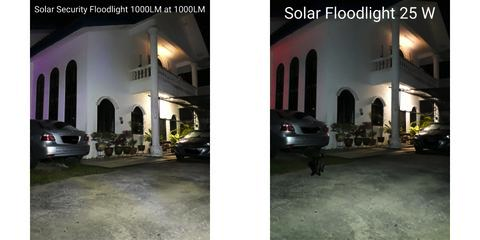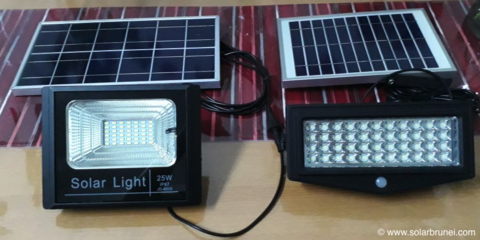If you haven’t noticed, we always describe the brightness of our solar lights in unit “lumens” instead of “watts”. Every once in a while we get customers asking, “what is the watt equivalent of this lumen?”
We always hesitate to answer this question because watt is not equivalent to lumen. Lumen is the measure of light intensity while watt is the measure of power needed to operate the light.
This question would be easy to answer decades ago when incandescent light bulb was the only household norm. Back then, these bulbs came in standard 16 lumens per watt so a description in terms of watt would be enough to illustrate the brightness of the bulb.
A higher wattage does not mean a brighter light.
But today, especially with the emerging LED technology, we can get bulbs as efficient as 250 lumens per watt! Not to mention fluorescent bulbs which produces light intensity of between 50 to 100 lumens per watt. Then how about other types of light bulbs such as halogen and CFL? These comes with another range of luminosity per watt. This is why the unit “watt” is no longer an accurate measure of brightness for today’s light bulbs. A higher wattage does not mean a brighter light anymore. When was the last time you’ve seen an incandescent light bulb anyway?

To demonstrate this point, we’ve tested an LED from another supplier which is rated at 25 watts. We compare it with our Solar Security Floodlight 1000LM which is only rated at 10 watts. We shone both lights about 8 meters away from the house and the difference is evident! Our 10 watts LED is much brighter than the 25 watts LED. Our Solar Floodlight 1000 LM is capable of producing 100 lumens/watt while the other solar light is only capable of producing 32 lumens/watt.

So, what is the importance of knowing the “lumens per watt” of a light bulb?
Bulbs with higher “lumens per watt” need less energy to produce bright illumination and hence are more energy efficient. This means that, for a light bulb with a higher lumens per watt, you will be paying less for electricity in the long run if it is not solar powered; and if it is solar powered, the components such as the solar panel and battery will be smaller, therefore are more cost effective compared to a light bulb with the same overall brightness but rated with a lower lumens per watt.
Taking the two solar floodlights above as example, to produce an illumination of 1000 lumens, the 100 lumens/watt LED will consume only 10 Wh of electricity per hour (1000 lm / 100 lm per watt) while the 32 lumens/watt LED will consume 31.25 Wh of electricity per hour to produce the same brightness. That’s three times more energy consuming. Imagine your electricity bill if you have 20 of those at home and switched on over 10 hours every night!
So even though light bulbs with lower lumens per watt are always cheaper than a more energy efficient light bulb (higher lumens per watt), you might still ultimately end up paying more as they need more power to operate which means that you will need to pay for higher electricity bill, more gasoline for generators or bigger components for solar power systems.

So, when you’re out shopping for light bulbs, whether it is to be powered by solar or not, always compare and choose the ones that can produce the highest lumens per watt if you wish to save more money in the long run.


One thought on “Why you should be looking at “lumens” instead of “watts””
Comments are closed.